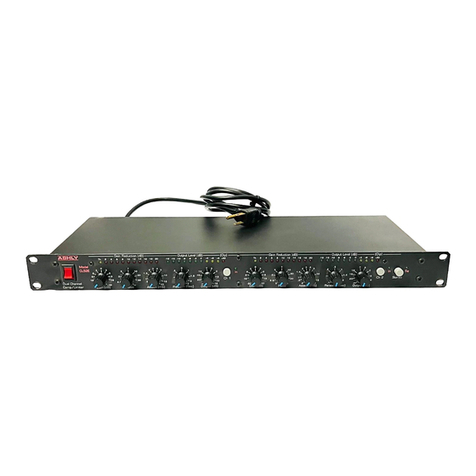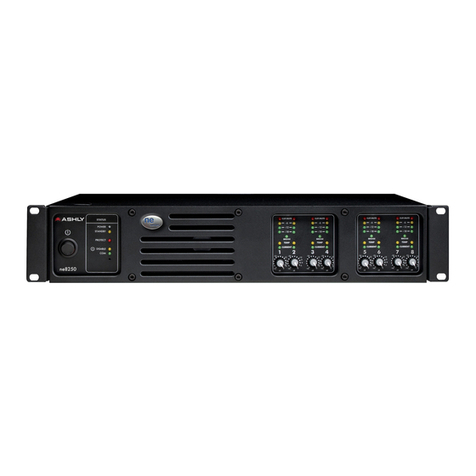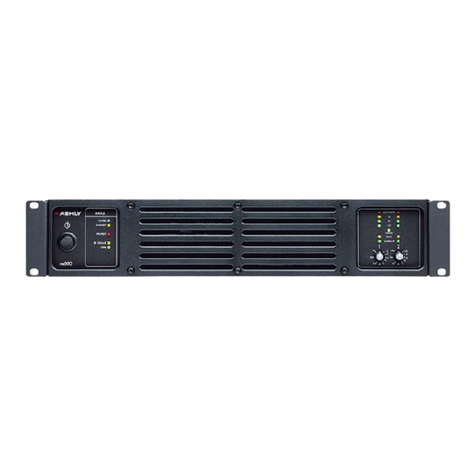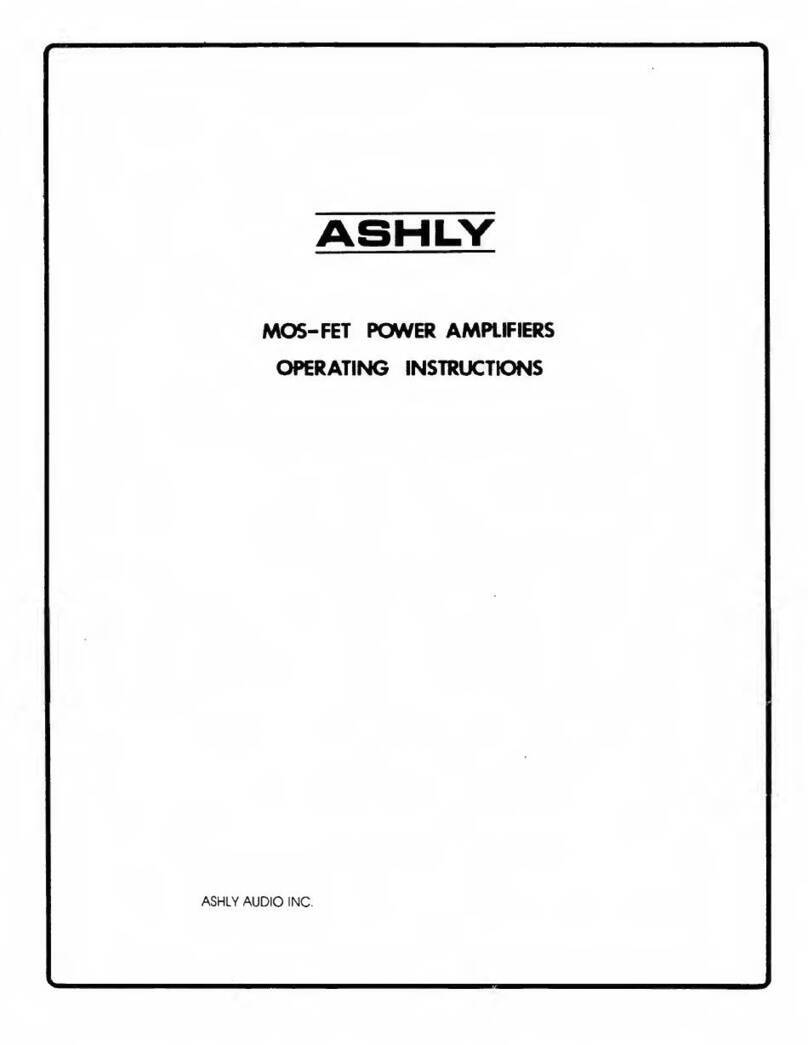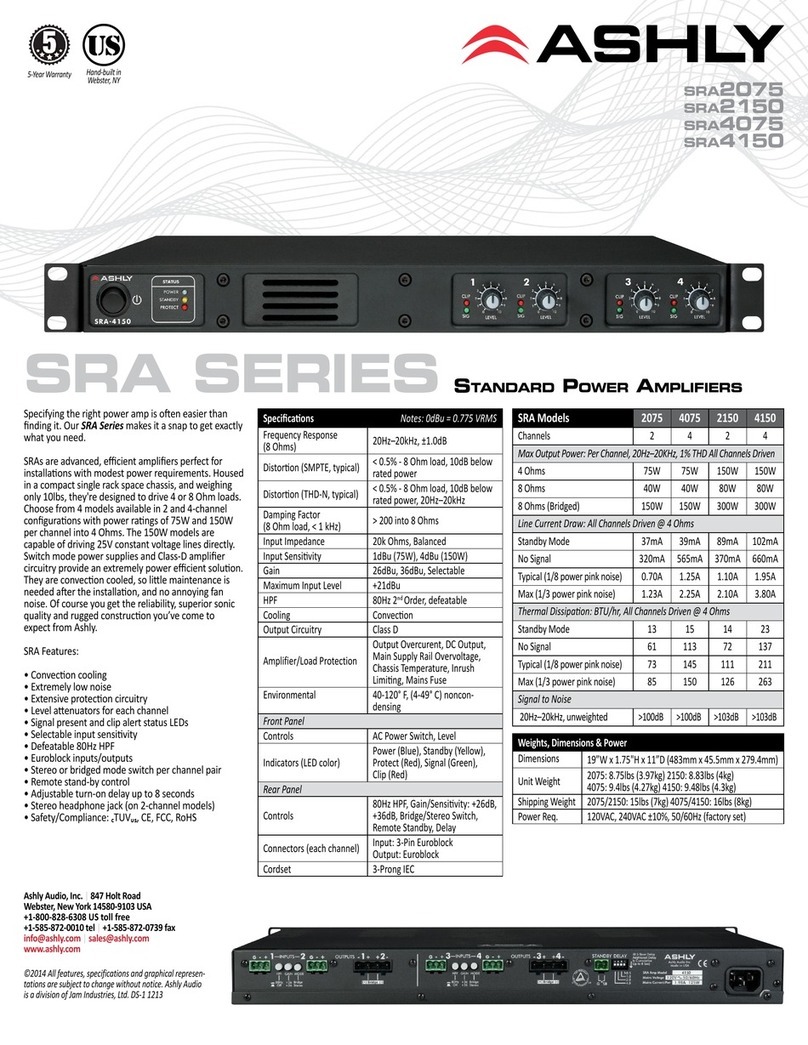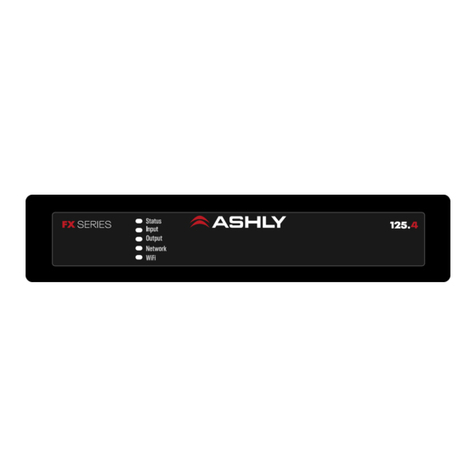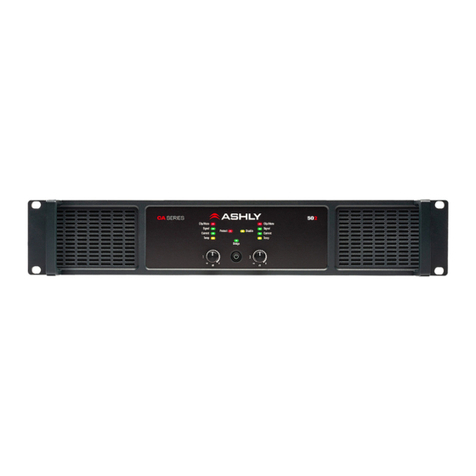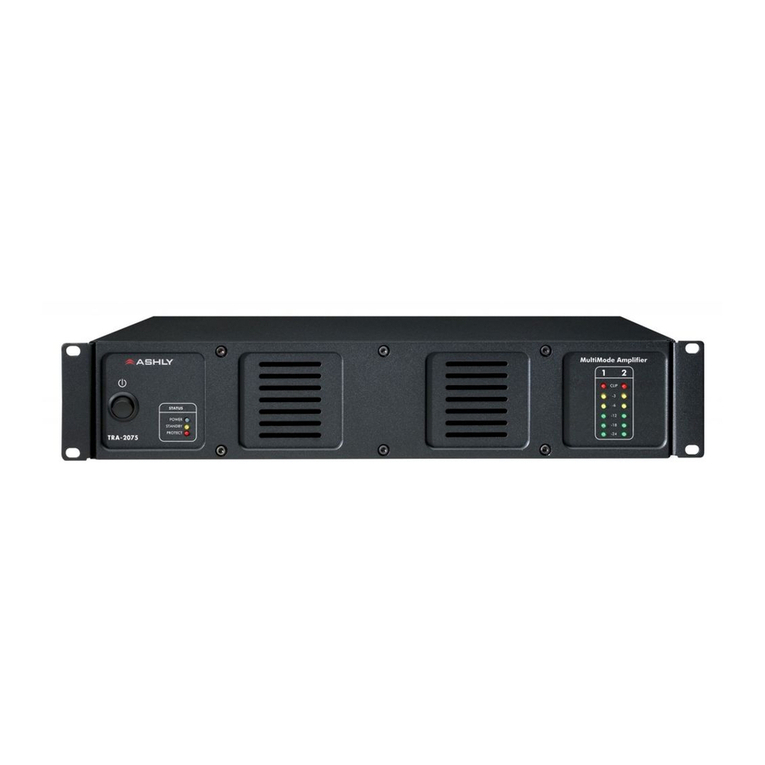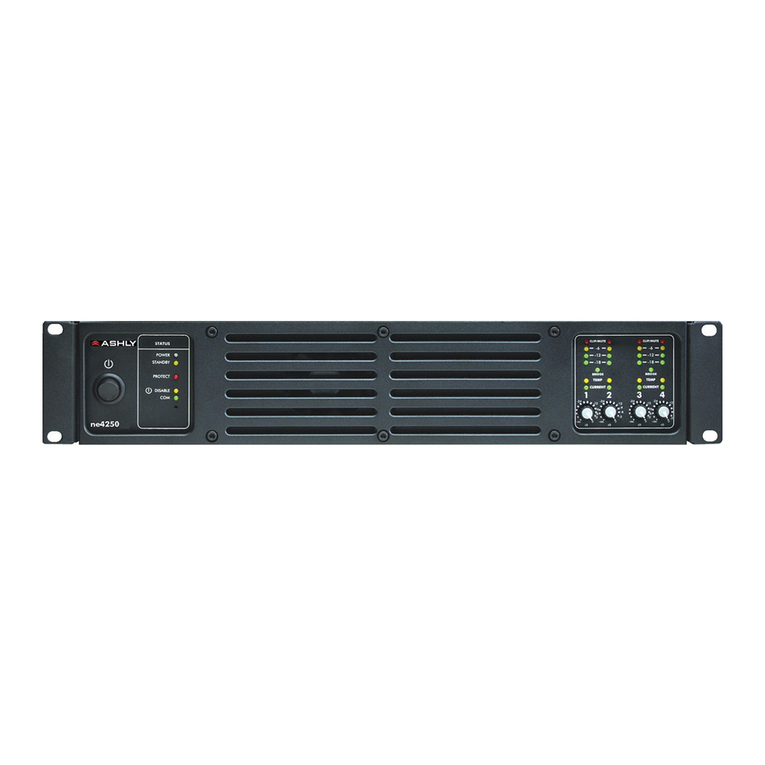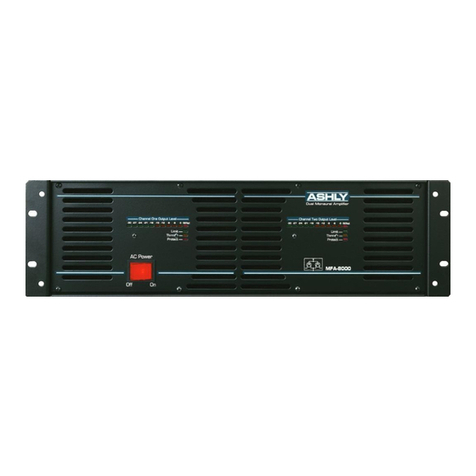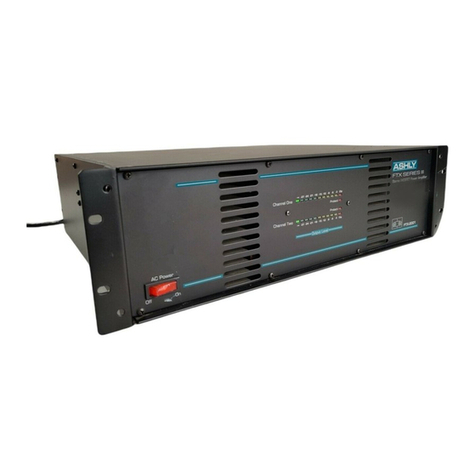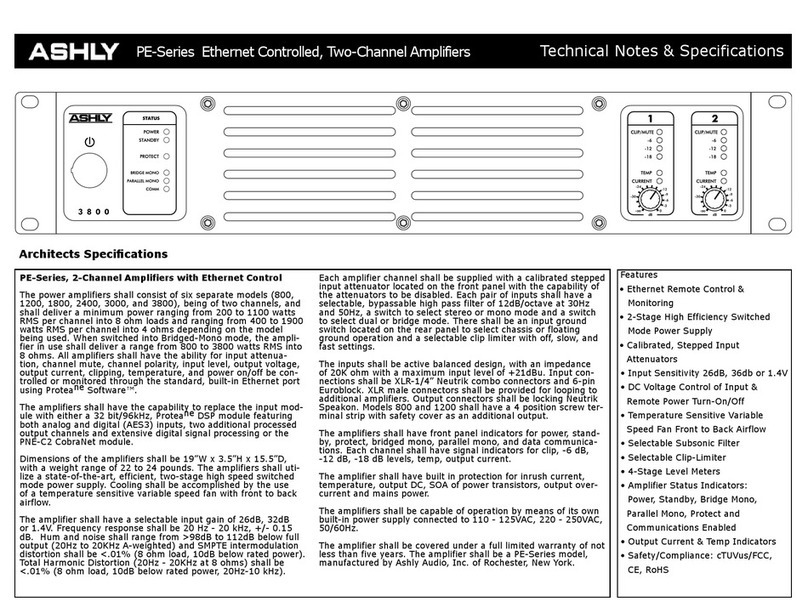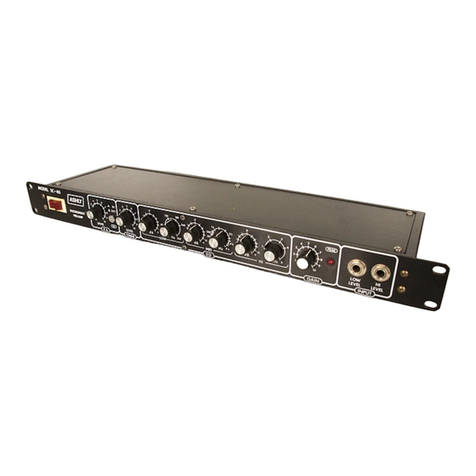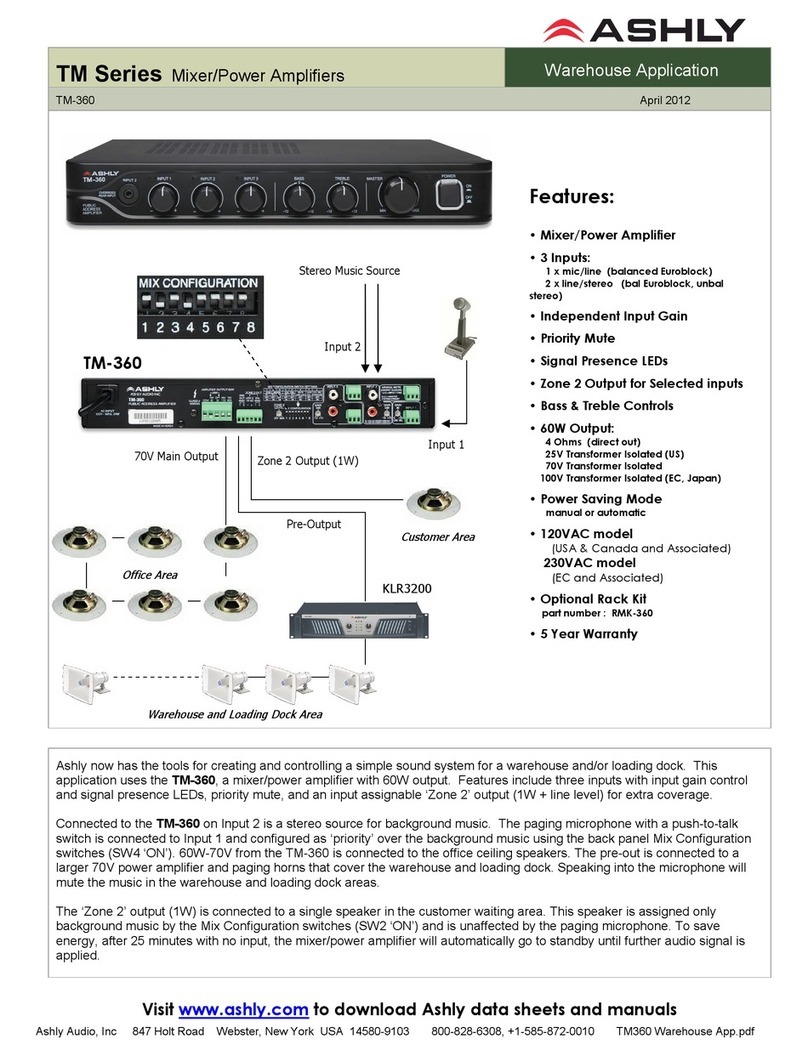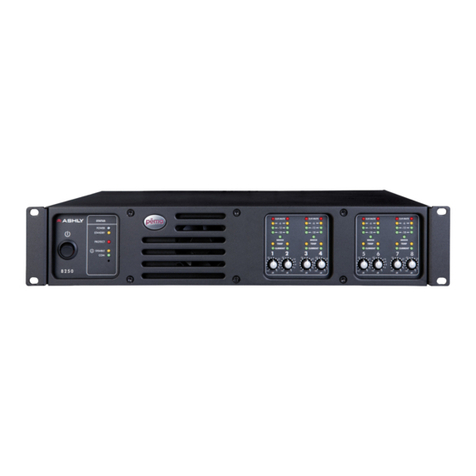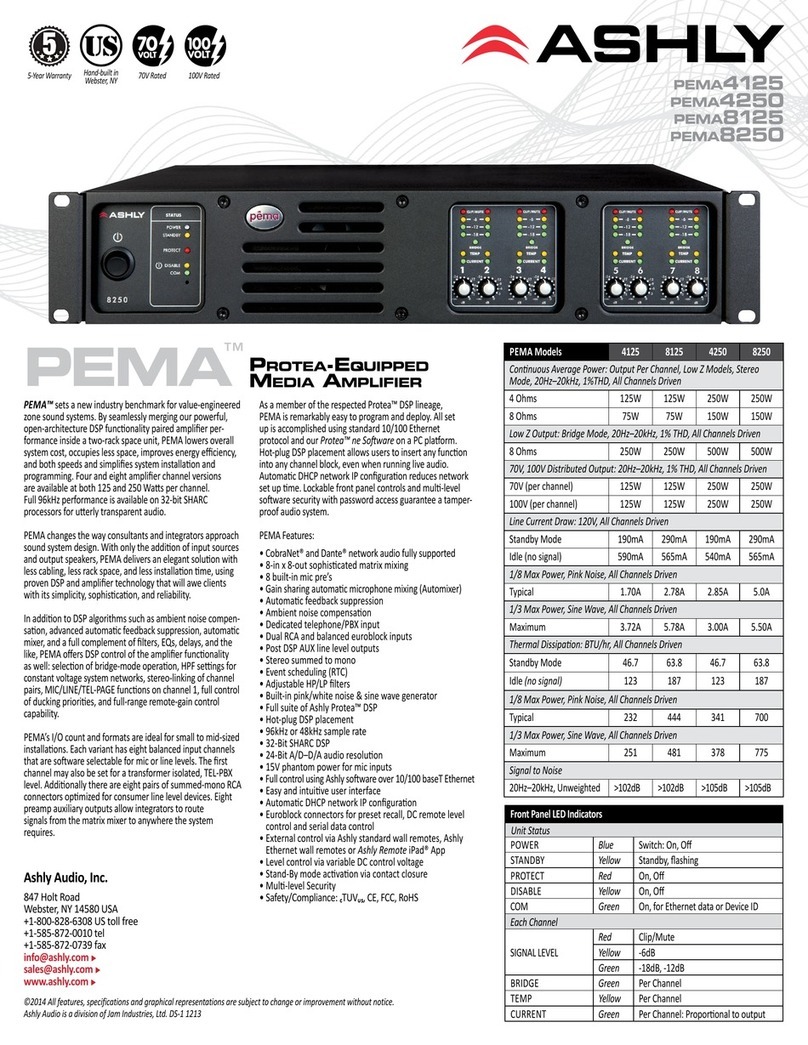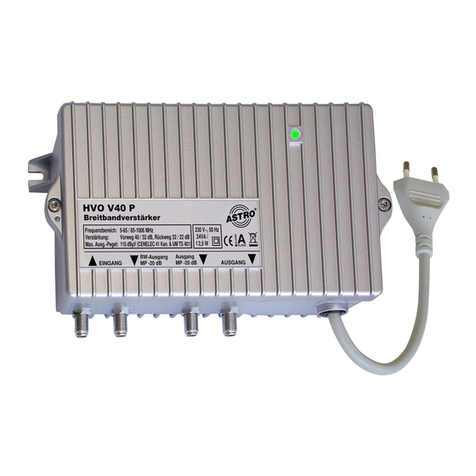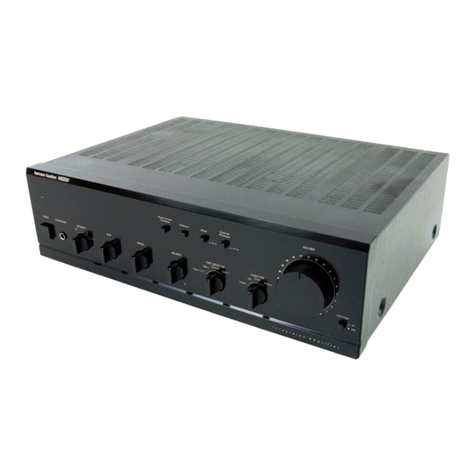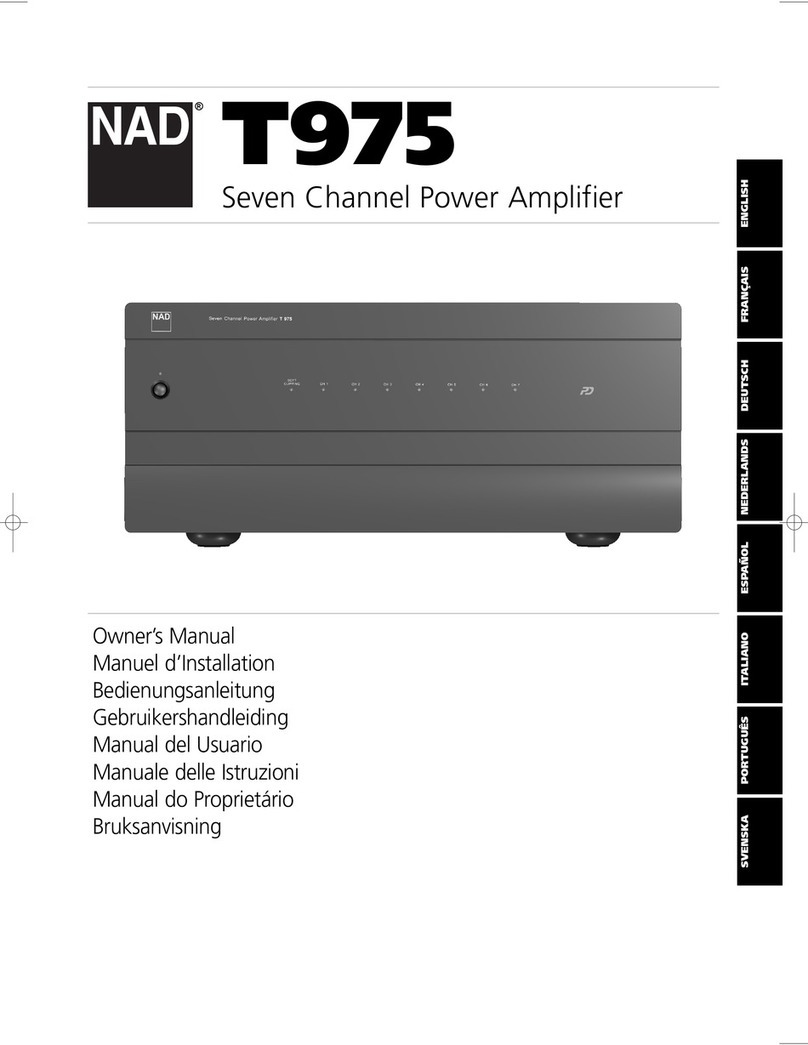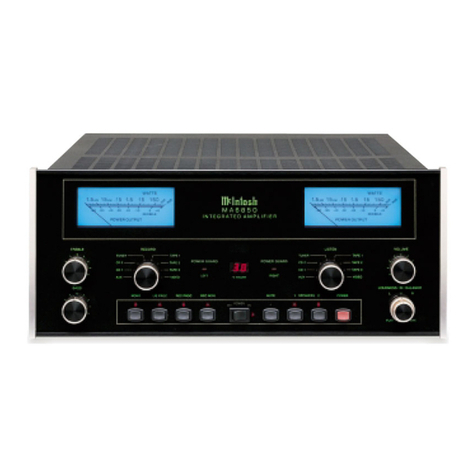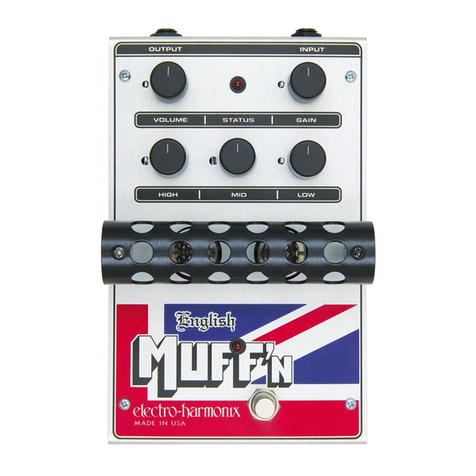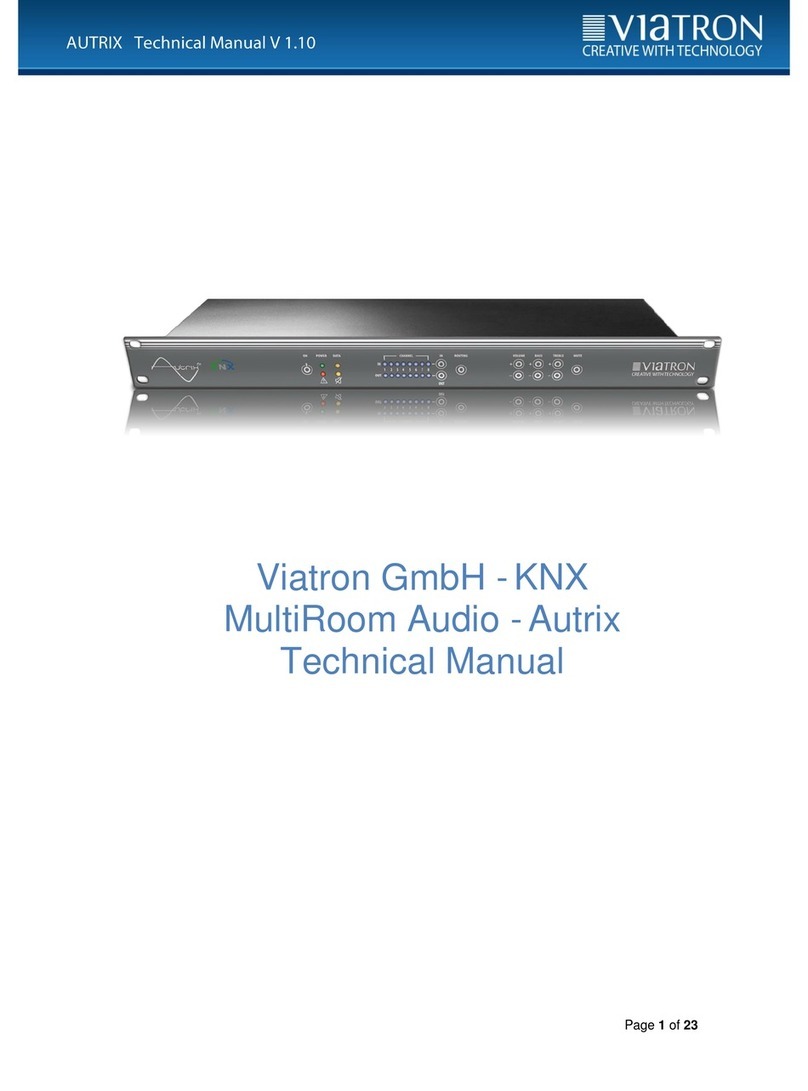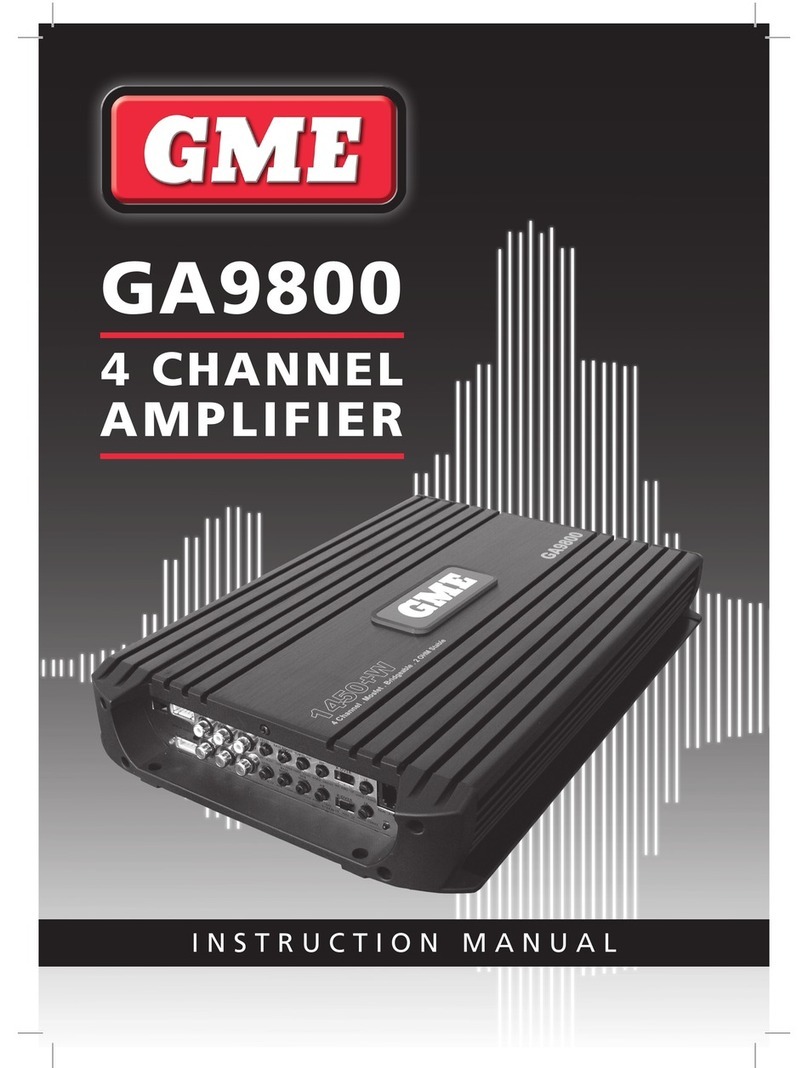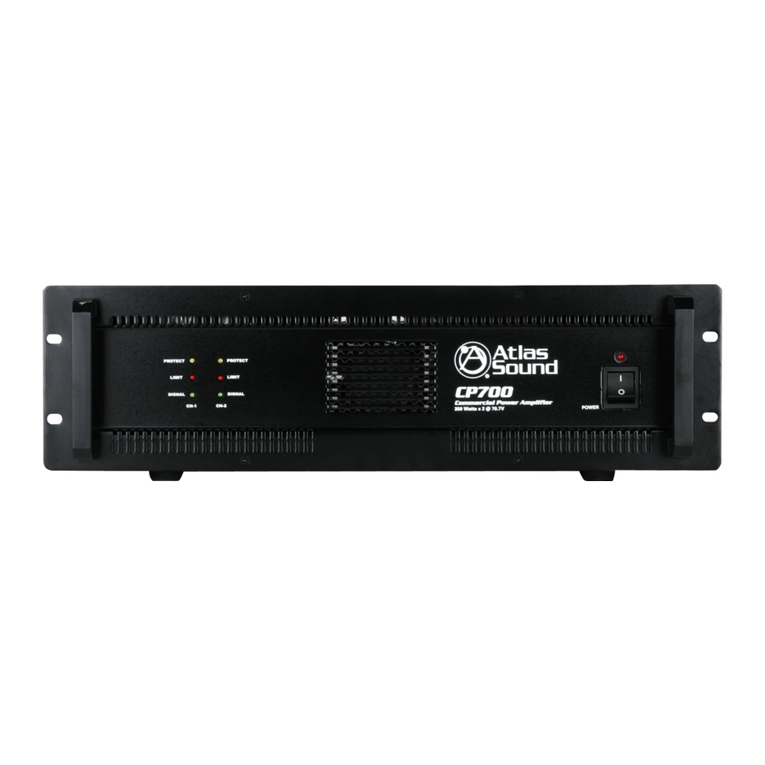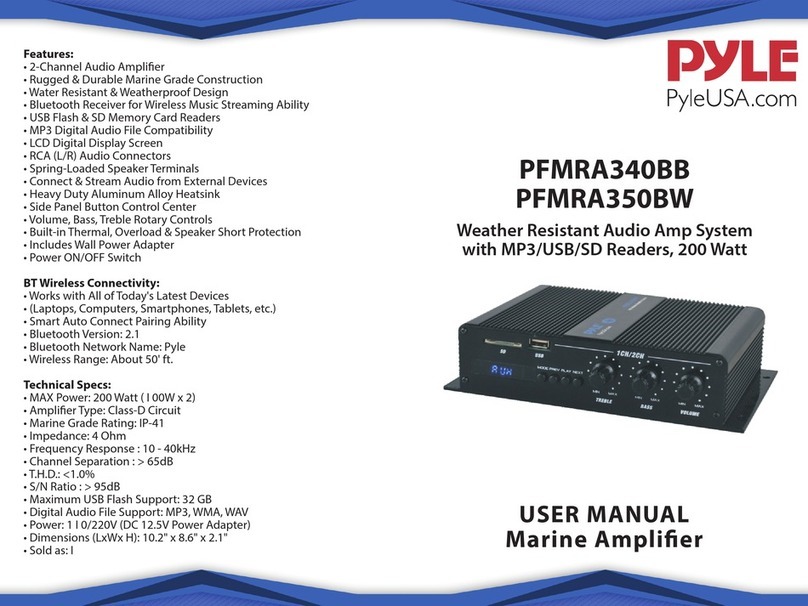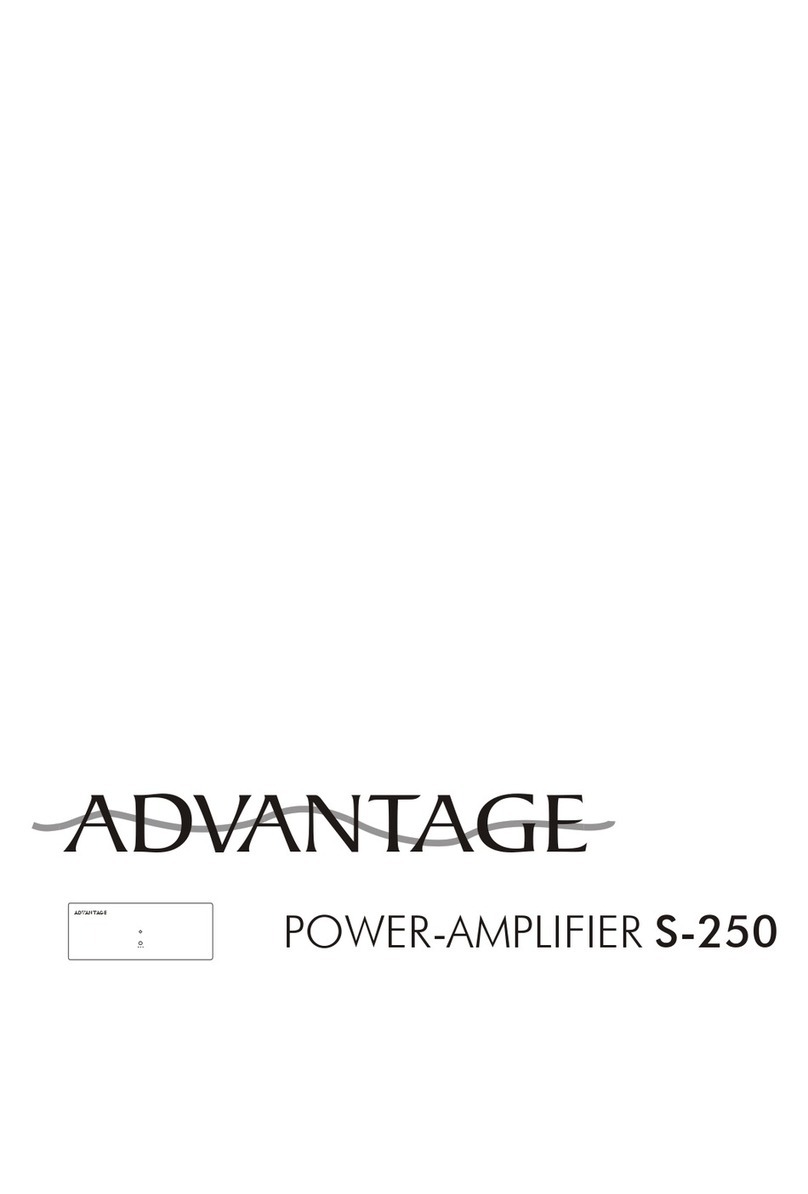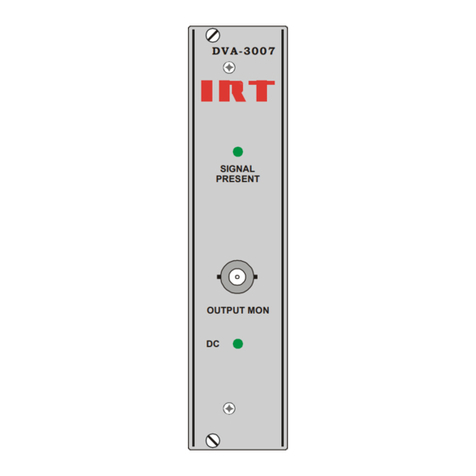
Operating Manual - nX, nXe, and nXp Power Ampliers
4
Table of Contents
1 Introduction .....................6
1.1 Amplier Series..................6
2 nX Installation Requirements .......7
2.1 AC Mains Voltage, Power, and Current. . 7
2.2 Input Signal Wiring. . . . . . . . . . . . . . . 8
2.3 Output Speaker Wiring . . . . . . . . . . . . 8
2.4 Remote Control Wiring . . . . . . . . . . . . 8
2.5 AUX Output Wiring . . . . . . . . . . . . . . . 9
2.6 Mechanical.....................9
2.7 Cooling.......................9
3 nX Amplier Protection ...........10
4 Front Panel Features (all models) . . . 10
4.1 Mounting Holes . . . . . . . . . . . . . . . . . 10
4.2 Air Inow Vents.................10
4.3 Factory Reset/Sleep Mode Switch . . . . 10
4.4 Channel Attenuators . . . . . . . . . . . . . 11
4.5 Channel LED Indicators . . . . . . . . . . . 11
4.6 Amplier Status LEDs ............11
4.7 Power Switch/LED . . . . . . . . . . . . . . . 11
4.8 Series and Model Labels . . . . . . . . . . . 11
5 Rear Panel Features (nX Series) . . . . 12
5.1 Channel Conguration DIP Switch . . . . 12
5.2 Euroblock Input Jack . . . . . . . . . . . . . 12
5.3 Remote DC Level Control . . . . . . . . . . 12
5.4 Combo Input Jack . . . . . . . . . . . . . . . 12
5.5 Bridge Mode Switch . . . . . . . . . . . . . . 12
5.6 SpeakON®Output Jacks . . . . . . . . . . . 12
5.7 PowerCON®AC Mains Connector . . . . . 12
5.8 Serial Number Sticker . . . . . . . . . . . . 12
6 Rear Panel Features (nXe Series) . . . 13
6.1 Ethernet Port . . . . . . . . . . . . . . . . . . 13
6.2 Network Audio Module Option . . . . . . . 13
6.3 Standby Contact Closure . . . . . . . . . . 13
6.4 Fault Logic Outputs . . . . . . . . . . . . . . 13
6.5 Preset Recall Contact Closure . . . . . . . 13
6.6 Serial Data Connector . . . . . . . . . . . . 13
6.7 Aux Outputs . . . . . . . . . . . . . . . . . . . 13
6.8 AES3 Digital Audio I/O Option. . . . . . . 13
7 Rear Panel Features (nXp Series) . . . 14
7.1 Installed DSP . . . . . . . . . . . . . . . . . . 14
8 Ethernet Communications . . . . . . . 14
8.1 IP Address . . . . . . . . . . . . . . . . . . . . 14
8.2Firewalls......................14
8.3 Wi-Fi and LAN . . . . . . . . . . . . . . . . . . 14
8.4 Connecting Devices . . . . . . . . . . . . . . 14
*NOTE: Sections 9-13 (p15-51)
are NOT included in the printed
manual shipped with nX ampliers.
The complete owner's manual is avail-
able as a PDF le on the Ashly Web-
site. For best results when viewing
and navigating the PDF le, enable
the PDF Bookmarks.
9 Proteane Software ................15
9.1 Installing and Using the Software . . . . 15
9.1a Ashly Network Tree. . . . . . . . . . . . 15
9.1b Ashly Project Canvas . . . . . . . . . . 15
9.1c File Menu. . . . . . . . . . . . . . . . . . . 16
9.1d Network Menu . . . . . . . . . . . . . . . 16
9.1e Project Menu . . . . . . . . . . . . . . . . 16
9.1f Add Item Menu . . . . . . . . . . . . . . . 16
9.1g Options Menu. . . . . . . . . . . . . . . . 17
9.1h Flash Programmer Menu . . . . . . . . 17
9.1i Load Analysis Menu . . . . . . . . . . . . 17
9.1j Help Menu . . . . . . . . . . . . . . . . . . 18
9.2 nX Device Options Menu . . . . . . . . . . 18
9.2a Flash Reprogram Mode . . . . . . . . . 18
9.2b Link Group Conguration........18
9.2c Power On Delay . . . . . . . . . . . . . . 19
9.2d Idle Time Before Sleep . . . . . . . . . 19
9.2f Factory Installed Options . . . . . . . . 19
9.2g Clear All Stored Presets. . . . . . . . . 19
9.2h Sample Rate and Master Clock. . . . 19
9.2i DVCA Control . . . . . . . . . . . . . . . . 19
9.2j DSP Enable/Disable . . . . . . . . . . . . 19
9.3 nX Preset Options Menu . . . . . . . . . . 19
9.3a Sub Presets . . . . . . . . . . . . . . . . . 19
9.4 Device Control Tabs . . . . . . . . . . . . . 20
9.4a Software Control Surface. . . . . . . . 20
9.4b Security . . . . . . . . . . . . . . . . . . . 22
9.4c Network Properties . . . . . . . . . . . . 22
9.4d DSP Control . . . . . . . . . . . . . . . . . 23
9.4d - Pluggable DSP Blocks . . . . 23-38
9.4d - I/O Matrix Router . . . . . . . . . . 39
9.4d - Matrix Mixer and Auto Mixer. . . 39
9.4e Input Source . . . . . . . . . . . . . . . . 41
9.4f Metering . . . . . . . . . . . . . . . . . . . 41
9.4g Event Scheduler . . . . . . . . . . . . . . 41
9.4h Fault Log . . . . . . . . . . . . . . . . . . . 41
